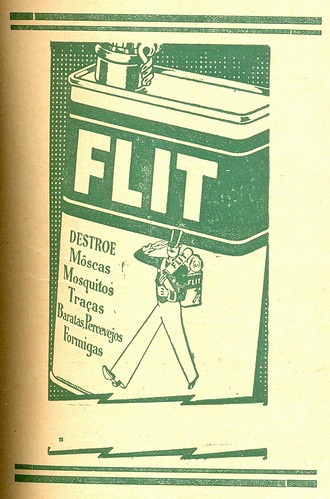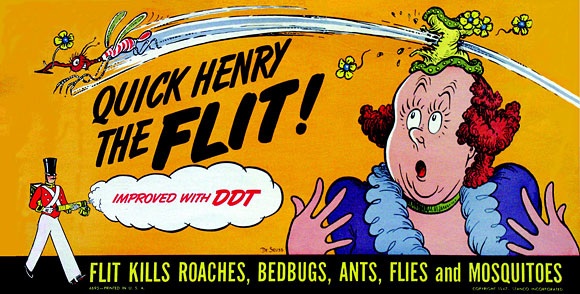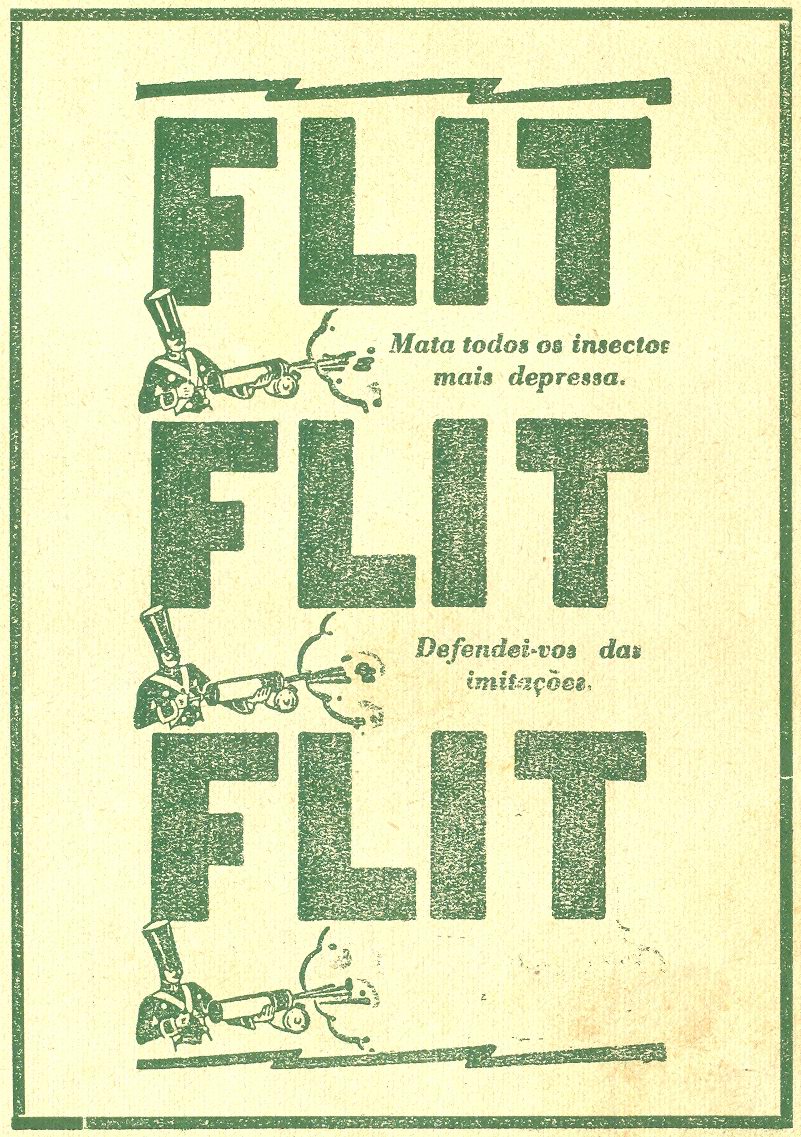Terebess Asia Online (TAO)
Index
Home
Fireflies
by Rabindranath Tagore
Tagore himself visited Japan several times, and Japanese haiku were translated into Bengali by Tagore early in the 20th century. However, Kalyan Dasgupta writes in 2001 that
[...] to this day, haiku as a literary expression does not seem to evoke much more than a queer reaction among the general reading public in either West Bengal or Bangladesh.
And so, when he published Jaapaani Haaiku (Calcutta: 2000)--a Bengali anthology of Japanese haiku--Dasgupta felt the need to describe for his readers "what the Japanese have sought from haiku," including "elegance" and "simplicity." Such information on how to receive haiku is essential if one wishes to import the form to a non-Japanese language and culture.
The title of this poem, ‘Fireflies’, comes from the first verse of the bilingual ‘Lekhan’ (1926)—‘My fancies are fireflies. . .’ It consists of 256 epigrams and short verses and shares structural similarity with Tagore’s other notable epigrammatic poem, ‘Stray Birds’. These poems resemble the sayings of a wise man rather than poetry. The possibility of the influence of Japanese Haiku can be suggested. The compact style conveys memorable poetic expressions with great force and intensity. The brevity and crispness of these verses combined with the wit and wisdom contained in them make these poems extremely delightful and reader friendly. The Bengali version of some these poems are also to be found in ‘Sphulinga’ (1946) apart from ‘Lekhan’.
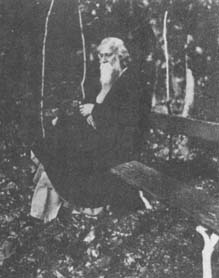
Tagore in Balatonfüred, Hungary
(November 1926)
The beautiful promenade on the shore of lake Balaton was named after Rabindranath Tagore (it was called Kolos promenade, then Deák promenade previously). The world-famous Hindu poet heart disease was treated here in 1926. He completed the ‘Fireflies’ during this stay in Balatonfüred. After his recovery he planted a lime-tree in the health-park. This act was motivated by an old Indian legend saying that if the tree takes root, its planter will live long so that he or she can see the new sprouts. "If I am not present in this world any more, oh my tree, let your new leaves rustle in spring above those who roam about; the poet loved you until his death." - wrote the poet. In fact, Tagore lived for another 17 years after having planted the tree. A Hindu grove has been created around the memorial tree and statue of the poet in the past decades. Several presidents of the Indian Republic including Indira Gandhi saluted the memory of Tagore by planting trees.
‘Fireflies’ (‘Lekhan’) printed in facsimile of the poet’s handwriting:
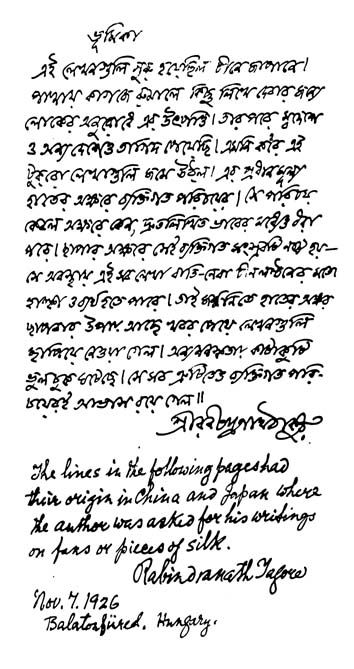
The lines in the following pages had
their origin in China and Japan where
the author was asked for his writings
on fans or pieces of silk.
Rabindranath Tagore
Nov. 7. 1926
Balatonfüred, Hungary.
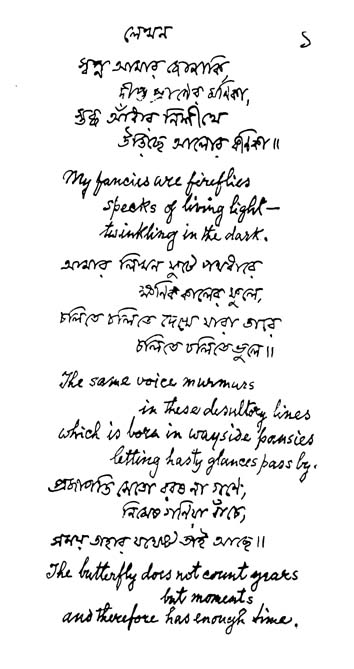
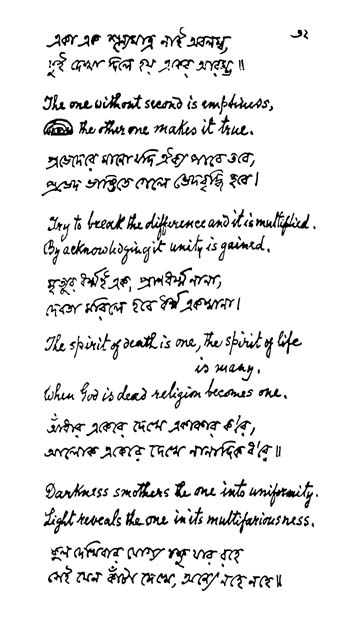
My fancies are fireflies, —
Specks of living light
twinkling in the dark.
The voice of wayside pansies,
that do not attract the careless glance,
murmurs in these desultory lines.
In the drowsy dark caves of the mind
dreams build their nest with fragments
dropped from day's caravan.
Spring scatters the petals of flowers
that are not for the fruits of the future,
but for the moment's whim.
Joy freed from the bond of earth's slumber
rushes into numberless leaves,
and dances in the air for a day.
My words that are slight
my lightly dance upon time's waves
when my works havy with import have gone down.
Mind's underground moths
grow filmy wings
and take a farewell flight
in the sunset sky.
The butterfly counts not months but moments,
and has time enough.
My thoughts, like spark, ride on winged surprises,
carrying a single laughter.
The tree gazes in love at its own beautiful shadow
which yet it never can grasp.
Let my love, like sunlight, surround you
and yet give you illumined freedom.
Days are coloured vbubbles
that float upon the surface of fathomless night.
My offerings are too timid to claim your remembrance,
and therefore you may remember them.
Leave out my name from the gift
if it be a burden,
but keep my song.
April, like a child,
writes hieroglyphs on dust with flowers,
wipes them away and forgets.
Memory, the priestess,
kills the present
and offers its heart to the shrine of the dead past.
From the solemn gloom of the temple
children run out to sit in the dust,
God watches them play
and forgets the priest.
My mind starts up at some flash
on the flow of its thoughts
like a brook at a sudden liquid note of its own
that is never repeated.
In the mountain, stillness surges up
to explore its own height;
in the lake, movement stands still
to contemplate its own depth.
The departing night's one kiss
on the closed eyes of morning
glows in the star of dawn.
Maiden, thy beauty is like a fruit
which is yet to mature,
tense with an unyielding secret.
Sorrow that has lost its memory
is like the dumb dark hours
that have no bird songs
but only the cricket's chirp.
Bigotry tries to keep turth safe in its hand
with a grip that kills it.
Wishing to hearten a timid lamp
great night lights all her stars.
Though he holds in his arms the earth-bride,
the sky is ever immensely away.
God seeks comrades and claims love,
the Devil seeks slaves and claims obedience.
The soil in return for her service
keeps the tree tied to her,
the sky asks nothing and leaves it free.
Jewel-like immortal
does not boast of its length of years
but of the scintillating point of its moment.
The child ever dwells in the mystery of ageless time,
unobscured by the dust of history.
Alight laughter in the steps of creation
carries it swiftly across time.
One who was distant came near to me in the morning,
and still nearer when taken away by night.
White and pink oleanders meet
and make merry in different dialects.
When peace is active swepping its dirt, it is storm.
The lake lies low by the hill,
a tearful entreaty of love
at the foot of the inflexible.
There smiles the Divine Child
among his playthings of unmeaning clouds
and ephemeral lights and shadows.
The breeze whispers to the lotus,
"What is thy secret?"
"It is myself," says the lotus,
"Steal it and I disappear!"
The freedom of the storm and the bondage of the stem
join hands in the dance of swaying branches.
The jasmine's lisping of love to the sun is her flowers.
The tyrant claims freedom to kill freedom
and yet to keep it for himself.
Gods, tired of their paradise, envy man.
Clouds are hills in vapour,
hills are clouds in stone, —
a phantasy in time's dream.
While God waits for His temple to be built of love,
men bring stones.
I touch God in my song
as the hill touches the far-away sea
with its waterfall.
Light finds her treasure of colours
through the antagonism of clouds.
My heart to-day smiles at its past night of tears
like a wet tree glistening in the sun
after the rain is over.
I have thanked the trees that have made my life fruitflul,
but have failed to remember the grass
that has ever kept it green.
The one without second is emptiness,
the other one makes it true.
Life's errors cry for the merciful beauty
that can modulate their isolation
into a harmony with the whole.
They expect thanks for the banished nest
because their cage is shapely and secure.
In love I pay my endless debt to thee
for what thou art.
The pond sends up its lyrics from its dark in lilies,
and the sun says, they are good.
Your calumny against the great is impious,
it hurts yourself;
against the small it is mean,
for it hurts the victim.
The first flower that blossomed on this earth
was an invitation to the unborn song.
Dawn—the many-coloured flower—fades,
and then the simple light-fruit,
the sun appears.
The muscle that has a doubt if its wisdom
throttles the voice that would cry.
The wind tries to take the flame by storm
only to blow it out.
Life's play is swift,
Life's playthings fall behind one by one
and are forgotten.
My flower, seek not thy paradise
in a fool's buttonhole.
Thou hast risen late, my crescent moon,
but my night bird is still awake to greet thee.
Darkness is the veiled bride
silently waiting for the errant light
to return to her bosom.
Trees are the earth's endless effort to
speak to the listening heaven.
The burden of self is lightened
when I laugh at myself.
The weak can be terrible
because they try furiously to appear strong.
The wind of heaven blows,
The anchor desperately clutches the mud,
and my boat is beating its breast against the chain.
The spirit of death is one,
the spirit of life is many,
Whe God is dead religion becomes one.
The blue of the sky longs for the earth's green,
the wind between them sighs, "Alas."
Day's pain muffled by its own glare,
burns among stars in the night.
The stars crowd round the virgin night
in silent awe at her loneliness
that can never be touched.
The cloud gives all its gold
to the departing sun
and greets the rising moon
with only a pale smile.
He who does good comes to the temple gate,
he who loves reaches the shrine.
Flower, have pity for the worm,
it is not a bee,
its love is a blunder and a burden.
With the ruins of terror's triumph
children build their doll's house.
The lamp waits through the long day of neglect
for the flame's kiss in the night.
Feathers in the dust lying lazily content
have forgotten their sky.
The flowers which is single
need not envy the thorns
that are numerous.
The world suffers most from the disinterested tyranny
of its well-wisher.
We gain freedom whrn we have paid the full price
for our right to live.
Your careless gifts of a moment,
like the meteors of an autumn night,
catch fire in the depth of my being.
The faith waiting in the heart of a seed
promises a miracle of life
which it cannot prove at once.
Spring hesitates at winter's door,
but the mango blossom rashly runs our to him
before her time and meets her doom.
The world is the ever-changing foam
thet floats on the surface of a sea of silence.
The two separated shores mingle their voices
in a song of unfathomed tears.
As a river in the sea,
work finds its fulfilment
in the depth of leisure.
I lingered on my way till thy cherry tree lost ist bossom,
but the azalea brins to me, my love, thy forgiveness.
Thy shy little pomegranate bud,
blushing to-day behind her veil,
will burst into a passionate flower
to-morrow when I am away.
The clumsiness of power spoils the key,
and uses the pickaxe.
Birth is from the mystery of night
into the grerater mystery of day.
These paper boats of mine are meant to dance
on the ripples of hours,
and not to reach any destination.
Migratory songs wing from my heart
and seek their nests in your voice of love.
The sea of danger, doubt and denial
around man's little island of certainty
challenges him to dare the unknown.
Love punishes when it forgives,
and injured beauty by its awful silence.
You live alone and unrecompensed
because they are afraid of your great worth.
The same sun is newly born in new lands
in a ring of endless dawns.
God is world is ever renewed by death,
a Titan's ever crushed by its own existence.
The glow-worm while exploring the dust
never knows that stars are in the sky.
The tree is of to-day, the flower is old,
it brings with it the message
of the immemorial seed.
Each rose that comes brings me greetings
from the Rose of an eternal spring.
God honours me when I work,
He loves me when I sing.
My love of to-day finds no home
in the nest deserted by yesterday's love.
The fire of pain tracse for my soul
a luminous path across her sorrow.
The grass survives the hill
through its resurrections from countless deaths.
Thou hast vanished from my reach
leaving an impalpable touch in the blue of the sky,
an invisible image in the wind moving
among the shadows.
In pity for the desolate branch
spring leaves to it a kiss that fluttered in a lonely leaf.
The shy shadow in the farden
loves the sun in silence,
Flowers guess the secret, and mile,
while the leaves whisper.
I leave no trace of wings in the air,
but I am glad I have had my flight.
The fireflies, twinkling among leaves,
make the stars wonder.
The mountain remains unmoved
at its seeming defeat by the mist.
While the rose said to the sun,
"I shall ever remember thee,"
her petals fell to the dust.
Hills are the earth's gesture of despair
for the unreachable.
Though the thorn in thy flower pricked me,
O Beauty,
I am grateful.
The world knows that the few
are more than the many.
Let not my love be a burden on you, my friend,
know that it pays itself.
Dawn plays her lute before the gate of darkness,
and is content to vanish when the sun comes out.
Beauty is truth's smile
when she beholds her own face
in a perfect mirror.
The dew-drop knows the sun
only within its own tiny orb.
Forlorn thoughts from the forsaken hives of all ages,
swarming in the air, hum round my heart
and seek my voice.
The desert is imprisoned in the wall
of its unbounded barrenness.
In the thrill of little leaves
I see the air's invisible dance,
and in their glimmering
the secret heart-beats of the sky.
You are like a flowering tree,
amazed when I praise you for your gifts.
The earth's sacrifical fire
flames up in her trees,
scattering sparks in flowers.
Foretsts, the clouds of earth,
hold up to the sky their silence,
and clouds from above come down
in resonant showers.
The world speaks to me in pictures,
my soul answers in music.
The sky tells its beads all night
on the countless stars
in memory of the sun.
The darkness of night, like pain, is dumb,
the darkness of dawn, like peace, is silent.
Pride engraves his frowns in stones,
loe offers her surrender in flowers.
The obsequious brush curtails truth
in diference to the canvas which is narrow.
The hill in its longing for the far-away sky
wishes to be like the cloud
with its endless urge of seeking.
To justify their own spilling of ink
they spell the day as night.
Profit smiles on goodness
when the good is profitable.
In its swelling pride
the bubble doubts the turth of the sea,
and laughs and bursts into emptiness.
Love is an endless mystery,
for it has nothing else to explain its.
My clouds, sorrowing in the dark,
forget that they themselves
have hidden the sun.
Man discovers his own wealth
when God comes to ask gifts of him.
You leave your memory as a flame
to my lonely lamp of separation.
I came to offer thee a flower,
but thou must have all my garden,—
It is thine.
The picture—a memory of light
treasured by the shadow.
It is easy to make faces at the sun,
He is exposed by his own light in all
directions.
History slowly smothers its truth,
but hastily struggles to revive it
in the terrible penance of pain.
My work is rewarded in daily wages,
I wait for my final value in love.
Beauty knows to say, "Enough,"
barbarism clamours for still more.
God loves to see in me, not his servant,
but himself who serves all.
The darkness of night is in harmony with day,
the morning of mist is discordant.
In the bounteous time of roses love is wine,—
it is food in the famished hour
when their petals are shed.
An unknown flower in a strange land
speaks to the poet:
"Are we not of the same soil, my lover?"
I am able to love my God
because He gives me freedom to deny Him.
My untuned strings beg for music
in their anguished cry of shame.
The worm thinks it strange and foolish
that man does not eat his books.
The clouded sky to-day bears the visior
of the shadow of a divine sadness
on the forehead of brooding eternity.
The shade of my tree is for passers-by,
its fruit for the one for whom I wait.
Flushed with the glow of sunset
earth seems like a ripe fruit
ready to be harvested by night.
Light accepts darkness for his spouse
for the sake of creation.
The reed waits for his master's breath,
the Master goes seeking for his reed.
To the blind pen the hand that writes is unreal,
its writing unmeaning.
The sea smites his own barren breast
because he has no flowers to offer to the moon.
The greed for fruit misses the flower.
God in His temple of stars
waits for man to bring him his lamp.
The fire restrained in the tree fashions flowers.
Released from bonds, the shameless flame
dies in barren ashes.
The sky sets no snare to capture the moon,
it is her own freedom which binds her.
The light that fills the sky
seeks its limit in a dew-drop on the grass.
Wealth is the burden of bigness,
Welfare the fulness of being.
The razor-blade is proud of its keenness
when it sneers at the sun.
The butterfly has leisure to love the lotus,
not the bee busily storing honey.
Child, thou bringest to my heart
the babble of the wind and the water,
the flower's speechless secrets, the clouds' dreams,
the mute gaze of wonder of the morning sky.
The rainbow among the clouds may be great
but the little butterfly among the bushes is greater.
The mist weaves her net round the morning,
captivates him, and makes him blind.
The Morning Star whispers to Dawn,
"Tell me that you are only for me."
"Yes," she answers,
"And also only for that nameless flower."
The sky remains infinitely vacant
for earth there to build its heaven with dreams.
Perhaps the crescent moon smiles in doubt
at being told that it is a fragment
awaiting perfection.
Let the evening forgive the mistakes of the day
and thus win peace for herself.
Beauty smiles in the confinement of the bud,
in the heart of a sweet incompleteness.
Your flitting love lightly brushed with its wings
my sun-flower
and never asked if it was ready to surrender its honey.
Leaves are silences
around flowers which are their words.
The tree bears its thousand years
as one large majestic moment.
My offerings are not for the temple at the end of the road,
but for the wayside shrines
that surprise me at every bend.
Hour smile, my love, like the smell of a strange flower,
is simple and inexplicable.
Death laughs when the merit of the dead is exaggerated
for it swells his store with more than he can claim.
The sigh of the shore follows in vain
the breeze that hastens the ship across the sea.
Truth loves its limits,
for there it meets the beautiful.
Between the shores of Me and Thee
there is the loud ocean, my own surging self,
which I long to cross.
The right to possess boasts foolishly
of its right to enjoy.
The rose is a great deal more
than a blushing apology for the thorn.
Day offers to the silence of stars
his golden lute to be tuned
for the endless life.
The wise know how to teach,
the fool how to smite.
The centre is still and silent in the heart
of an enternal dance of circles.
The judge thinks that he is just when he compares
The oil of another's lamp
with the light of his own.
The captive flower in the King's wreath
smiles bitterly when the meadow-flower envies her.
Its store of snow is the hill's own burden,
its outpouring if streams is borne by all the world.
Listen to the prayer of the forest
for its freedom in flowers.
Let your love see me
even through the barrier of nearness.
The spirit of work in creation is there
to carry and help the spirit of play.
To carry the burden of the insturment,
count the cost of its material,
and never to know that it is for music,
is the tragedy of deaf life.
Faith is the bird that feels the light
and sings when the dawn is still dark.
I bring to thee, night, my day's empty cup,
to be cleansed with thy cool darkness
for a new morning's festival.
The mountain fir, in its rustling,
modulates the memory of its fights with the storm
into a hymn of peace.
God honoured me with his fight
when I was rebellious,
He ignored me when I was languid.
The sectarina thinks
that he has the sea
ladled into his private pond.
In the shady depth of life
are the lonely nests of memories
that shrink from words.
Let my love find its strength
in the service of day,
its peace in the union of night.
Life sends up in blades of grass
its silent hymn of praise
to the unnamed Light.
The stars of night are to me
the memorials of my day's faded flowers.
Open thy door to that which must go,
for the loss becomes unseemly when obstructed.
True end is not in the reaching of the limit,
but in a completion which is limitless.
The shore whispers to the sea:
"Write to me what thy waves struggle to say."
The sea writes in foam again and again
and wipes off the lines in a boisterous despair.
Let the touch ofthy finger thrill my life's strings
and make the music thine and mine.
The inner world rounded in my life like a fruit,
matured in joy and sorrow,
will drop into the darkness of the orogonal soil
for some further course of creation.
Form is in Matter, rhythm in Force,
meaning in the Person.
There are seekers of wisdom and seekers of wealth,
I seek thy company so that I may sing.
As the tree its leaves, I shed my words on the earth,
let my thoughts unuttered flower in thy silence.
My faith in truth, my vision of the perfect,
help thee, Master, in thy creation.
All the delights that I have felt
in life's fruits and flowers
let me offer to thee at the end of the feast,
in a perfect union of love.
Some have thought deeply and explored the
meaning of thy truth,
and they are great;
I have listened to catch the music of thy play,
and I am glad.
The tree is a winged spirit
released from the bondage of seed,
pursuing its adventure of life
across the unknown.
The lotus offers its beauty to the heaven,
the grass its service to the earth.
The sun's kiss mellows into abandonment
the miserliness of the green fruit clinging to its stem.
The flame met the earthen lamp in me,
and what a great marvel of light!
Mistakes live in the neighbourhood of truth
and therefore delude us.
The cloud laughed at the rainbow
saying that is was an upstart
gaudy in its emptiness.
The rainbow calmly answered,
"I am as inevitably real as tha sun himself."
Let me not grope in vain in the dark
but keep my mind still in the faith
that the day will break
and truth will appear
in its simplicity.
Through the silent night
I hear the returning vagrant hopes of the morning
knock at my heart.
My new love comes
bringing to me the eternal wealth of the old.
The earth gazes at the moon and wonders
that she sould have all her music in her smile.
Day with its glare of curiosity
puts the stars to flight.
My mind has itstrue union with thee, O sky,
at the window which is mine own,
and not in the open
where thou hast thy sole kingdom.
Man claims God's flowers as his own
when he weaves them in a garland.
The buried city, laid bare to the sun of a new age,
is ashamed that is has lost all its song.
Like my heart's pain that has long missed its meaning,
the sun's rays robed in dark
hide themselves under the ground.
Like my heart'spain at love's sudden touch,
they change their veil at the spring's call
and come out in the carnival of colours,
in flowers and leaves.
My life's empty flute
waits for its final music
like the primal darkness
before the stars came out.
Emancipation from the bondage of the soil
is no freedom for the tree.
The tapestry of life's story is woven
with the threads of life's ties
ever joining and breaking.
Those thoughts of mine that are never captured by words
perch upon my song and dance.
My soul to-night loses itself
in the silent heart of a tree
standing alone among the whispers of immensity.
Pearl shells cast up by the sea
on death's barren beach,—
a magnificent wastefulness of creative life.
The sunlight opens for me the word's gate,
love's light its terasure.
My life like the reed with ist stops,
has its play od colours
through the gaps in its hopes and gains.
Let not my thanks to thee
rob my silence of its fuller homage.
Life's aspirations come
in the guise of children.
The faded flower sighs
that the spring has vanished for ever.
In my life's garden
my wealth has been of the shadows and lights
that are never gathered and stored.
The fruit that I Have gained for ever
is thet which thou hast accepted.
The jasmine knows the sun to be her brother
in the heaven.
Light is young, the ancient light;
shadows are of the moment, they are born old.
I feel that the ferry of my songs at the day's end
will brong me across to the other shore
from where I shall see.
The butterfly flitting from flower to flower
ever remains mine,
I lose the one that is netted by me.
Your voice, free bird, reaches my sleeping nest,
and my drowsy wings dream
of a voyage to the light
above the clouds.
I miss the meaning of my own part
in the play of life
because I know not of the parts
that others play.
The flower sheds all its petals
and finds the fruit.
I leave my songs behind me
to the bloom of the ever-returning honeysuckles
and the joy of the wind from the south.
Dead leaves when they lose themselves in soil
take part in the life of the forest.
The mind ever seeks its words
from its sounds and silence
as the sky from its darkness and light.
The unseen dark plays on his flute
and the rhythm of light
eddies into stars and suns,
into thoughts and reams.
My songs are to sing
that I have loved Thy singing.
When the voice of the Silent touches my words
I know him and therefore I know myself.
My last salutations are to them
who knew me imperfect and loved me.
Love's gift cannot be given,
it waits to be accepted.
When death comes and whispers to me,
"Thy days are ended,"
let me say to him, "I have lived in love
and not in mere time."
He will ask, "Will thy songs remain?"
I shall say, "I know not, but this I know
that often when I sang I found my eternity."
"Let me light my lamp,"
say the star,
'and never debate
if it will help to remove the darkness."
Before the end of my journey
may I reach within myself
the one which is the all,
leaving the outer shell
to float away with the drifting multitude
upon the current of chance and change.
 Stumble It!
Stumble It!


![]()




![]()

 Stumble It!
Stumble It!

















 vernichtungsmittel, ca. 1930" style="width: 315px; height: 315px;" border="0">
vernichtungsmittel, ca. 1930" style="width: 315px; height: 315px;" border="0">